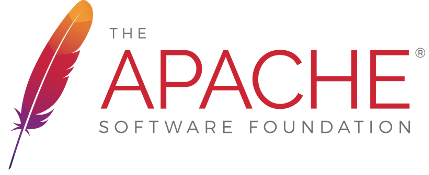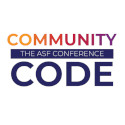|
For CXF up to 2.0.x Why Aegis?Aegis is a fast, StAX based, data-binding that makes developing code first services as simply as possible. It is able to handle most classes and create intelligent schemas for them. Features include:
CXF 2.1 DocumentationThere are some significant changes to Aegis in CXF 2.1. See Aegis (2.1). Details on How It WorksThis Page, which is a work in progress, explains some of the modularity of Aegis. You may find it helpful in understanding Aegis' behavior and in developing customizations. Using AegisMost people who use Aegis use the Simple Front End. If you are using Aegis, you can't move your code to some other web service framework without modifying all your code to work with JAXB or some other binding, so there's not much advantage to using the JAX-WS front-end. You might want to use Aegis with one of the specialized frontends, like JAX-RS. We don't have examples of that in this documentation. Spring ConfigurationMost people who use Aegis use the 'Simple' front end.
<simple:server id="pojoservice" serviceClass="demo.hw.server.HelloWorld" address="/hello_world">
<simple:serviceBean>
<bean class="demo.hw.server.HelloWorldImpl" />
</simple:serviceBean>
<simple:dataBinding>
<bean class="org.apache.cxf.aegis.databinding.AegisDatabinding" />
</simple:dataBinding>
<!-- Use this property only for XFire compatibility -- this version for 2.0.x ...
<property name="serviceConfigurations">
<list>
<bean class="org.apache.cxf.jaxws.support.JaxWsServiceConfiguration"/>
<bean class="org.apache.cxf.aegis.databinding.AegisServiceConfiguration"/>
<bean class="org.apache.cxf.service.factory.DefaultServiceConfiguration"/>
</list>
</property>
-->
</simple:server>
You can also use Aegis with JAX-WS. Here's a Spring configuration example for that.
<bean id="aegisBean" class="org.apache.cxf.aegis.databinding.AegisDatabinding" scope="prototype"/>
<bean id="jaxws-and-aegis-service-factory"
class="org.apache.cxf.jaxws.support.JaxWsServiceFactoryBean"
scope="prototype">
<property name="dataBinding" ref="aegisBean"/>
<!-- Use this property only for XFire compatibility -- this version for 2.0.x ...
<property name="serviceConfigurations">
<list>
<bean class="org.apache.cxf.jaxws.support.JaxWsServiceConfiguration"/>
<bean class="org.apache.cxf.aegis.databinding.AegisServiceConfiguration"/>
<bean class="org.apache.cxf.service.factory.DefaultServiceConfiguration"/>
</list>
</property>
-->
<!-- Use this property only for XFire compatibility -- this version for 2.1
<property name="serviceConfigurations">
<list>
<bean class="org.apache.cxf.jaxws.support.JaxWsServiceConfiguration"/>
<bean class="org.apache.cxf.aegis.databinding.XFireCompatibilityServiceConfiguration"/>
<bean class="org.apache.cxf.service.factory.DefaultServiceConfiguration"/>
</list>
</property>
-->
</bean>
<jaxws:endpoint id="my_service_endpoint" implementor="#my-service" address="/MyIndex">
<jaxws:serviceFactory>
<ref bean='jaxws-and-aegis-service-factory' />
</jaxws:serviceFactory>
</jaxws:endpoint>
Java configurationHere's a Java configuration using the Simple front end.
import org.apache.cxf.aegis.databinding.AegisDatabinding;
import org.apache.cxf.frontend.ServerFactoryBean;
ServerFactoryBean sf = new ServerFactoryBean();
sf.setServiceClass(serviceClass);
sf.setAddress("http://myhost/service");
sf.getServiceFactory().setDataBinding(new AegisDatabinding());
sf.create();
Similarly, here is a client side using the simple front end. Note the use of the WSDL. Without the WSDL, the simple front end will try to learn
import org.apache.cxf.aegis.databinding.AegisDatabinding;
import org.apache.cxf.frontend.ClientProxyFactoryBean;
ClientProxyFactoryBean factory = new ClientProxyFactoryBean();
factory.setServiceClass(serviceInterfaceClassObject);
factory.setAddress("http://myhost/service");
factory.setWsdlLocation("http://myhost/service?wsdl");
factory.getServiceFactory().setDataBinding(new AegisDatabinding());
MyService client = (MyService) factory.create();
XFire CompatibilityXFire had/has a different convention for generating namespace URI values from Java package names. It added an additional '/' character. import org.apache.cxf.aegis.databinding.AegisServiceConfiguration; // for 2.0.x sf.getServiceFactory().getServiceConfigurations().add(0, new AegisServiceConfiguration()); // for 2.1 sf.getServiceFactory().getServiceConfigurations().add(0, new XFireCompatibilityServiceConfiguration()); This will the change the namespaces that CXF generates by default so that they are the same as XFire would generate. Class <-> XML Mapping OverviewAegis has a flexible mapping system so you can control how your beans are controlled. By default your POJOs are serialized based on their name and namespaces. If you have a class in the "org.codehaus.xfire" package named "Employee" it would be serialized in namespace "http://xfire.codehaus.org" with the local name "Employee" Fore example, the java class:
public class Employee
{
private String name;
private String title;
public String getName() { return name; }
public void setName(String name) { this.name = name; }
public String getTitle() { return title; }
public void setTitle(String title) { this.title = title; }
}
In XML this translates to: <Employee xmlns="http://xfire.codehaus.org"> <name>Santa Claus</name> <title>Chief Present Officer (CPO)</title> </Employee> In XML Schema this would become a complex type:
<xsd:complexType name="Employee">
<xsd:sequence>
<xsd:element name="name" type="xsd:string" minOccurs="0" maxOccurs="1/>
<xsd:element name="title" type="xsd:string" minOccurs="0" maxOccurs="1/>
</xsd:sequence>
</xsd:complexType>
Validate your mapping! Supported Types
If you have constructors defined in your Java beans, make sure a default constructor (i.e. no arguments) is also declared. (Aegis needs a no-argument contstructor to instantiate client Java classes.) Setting Default minOccurs and nillable Parameters from JavaIf you have many properties, and you want most, or all of them, to have a minOccurs other than 0 or a nillable other than false, you can change the defaults for Aegis from Java code (amongst other places).
ServerFactoryBean sf = new ServerFactoryBean();
sf.setServiceClass(serviceClass);
sf.setAddress("http://myhost/service");
AegisDatabinding db = new AegisDatabinding();
sf.getServiceFactory().setDataBinding(db);
DefaultTypeMappingRegistry tmr = (DefaultTypeMappingRegistry)db.getTypeMappingRegistry();
// here we disuade XFire from its rather annoying tendency to assume that, just because
// anything in Java can be null, that we want to advertise all that nullity all over.
Configuration configuration = tmr.getConfiguration();
configuration.setDefaultMinOccurs(1);
configuration.setDefaultNillable(false);
sf.create();
More Information....This section is under construction. For more information about how the Aegis databinding works, please check out the Aegis documentation at the XFire site (http://xfire.codehaus.org/User's%2bGuide). |

